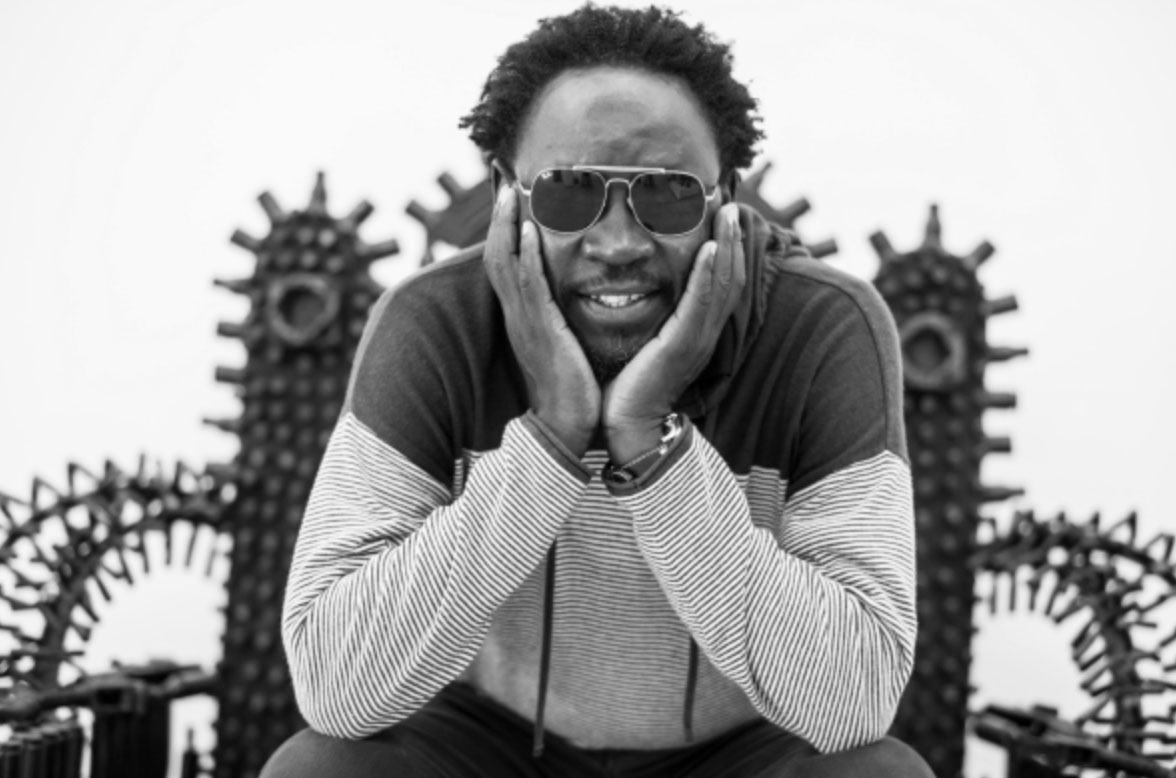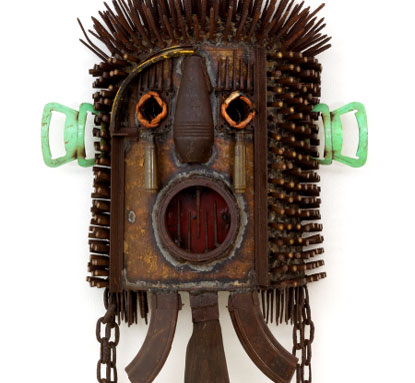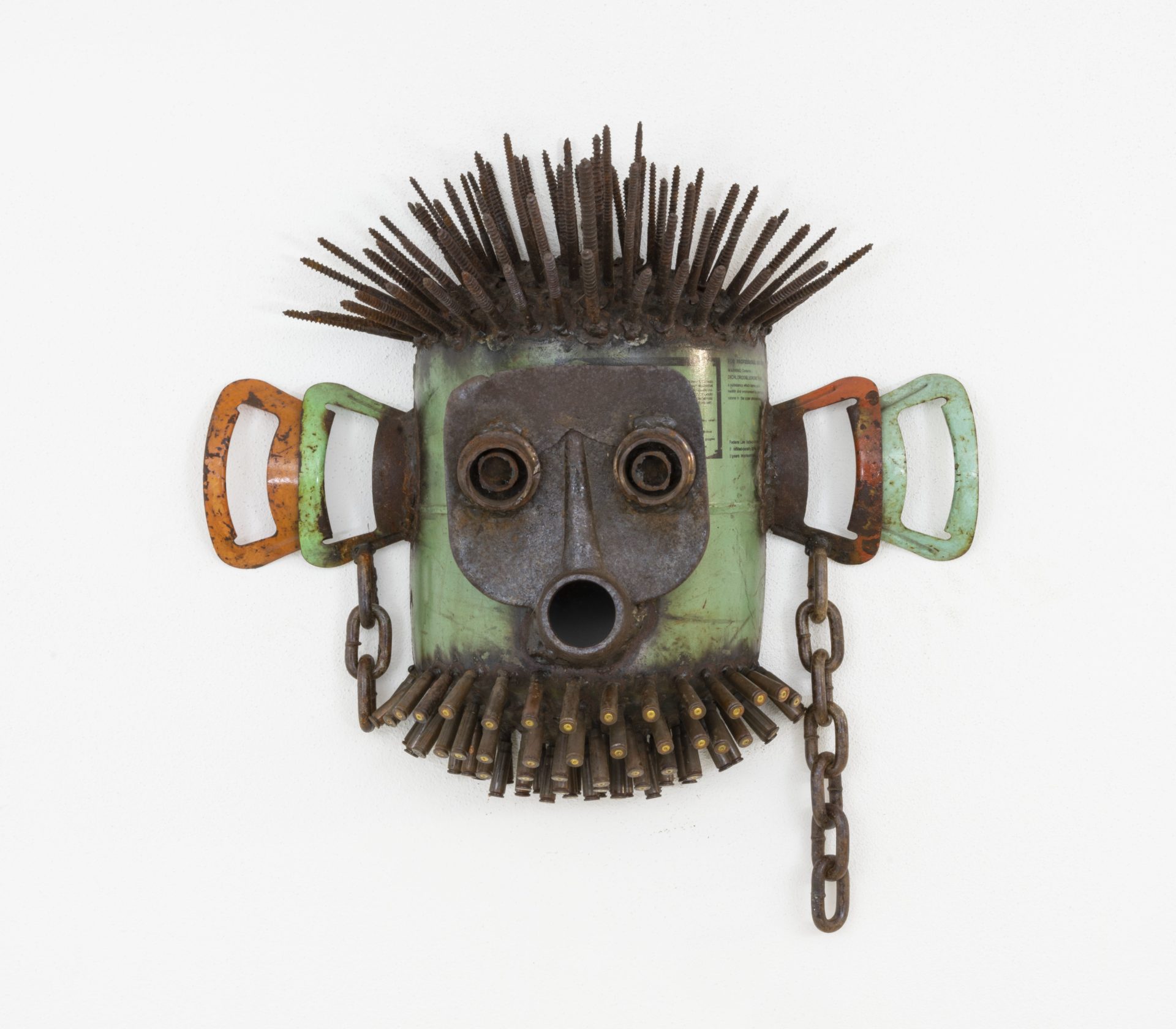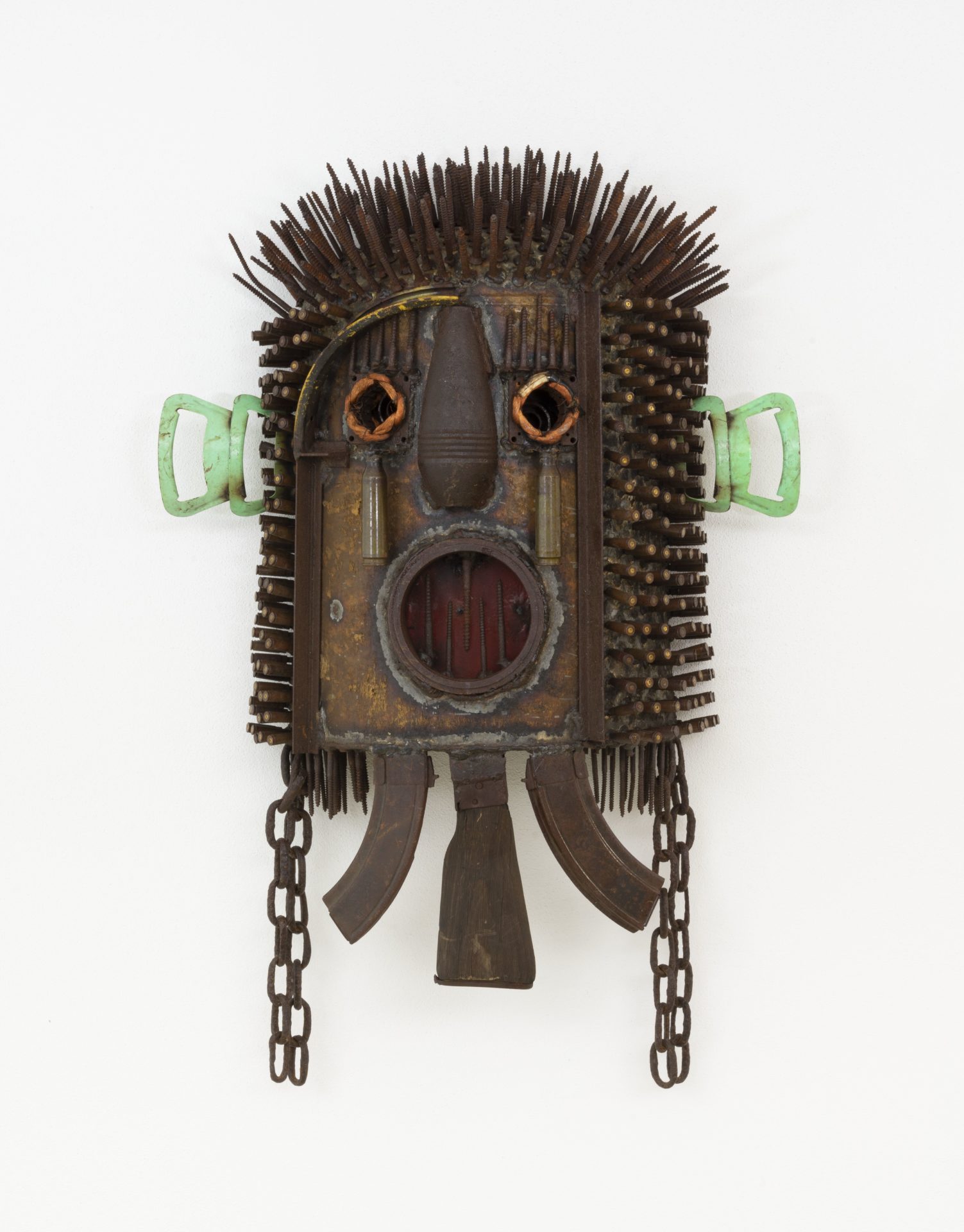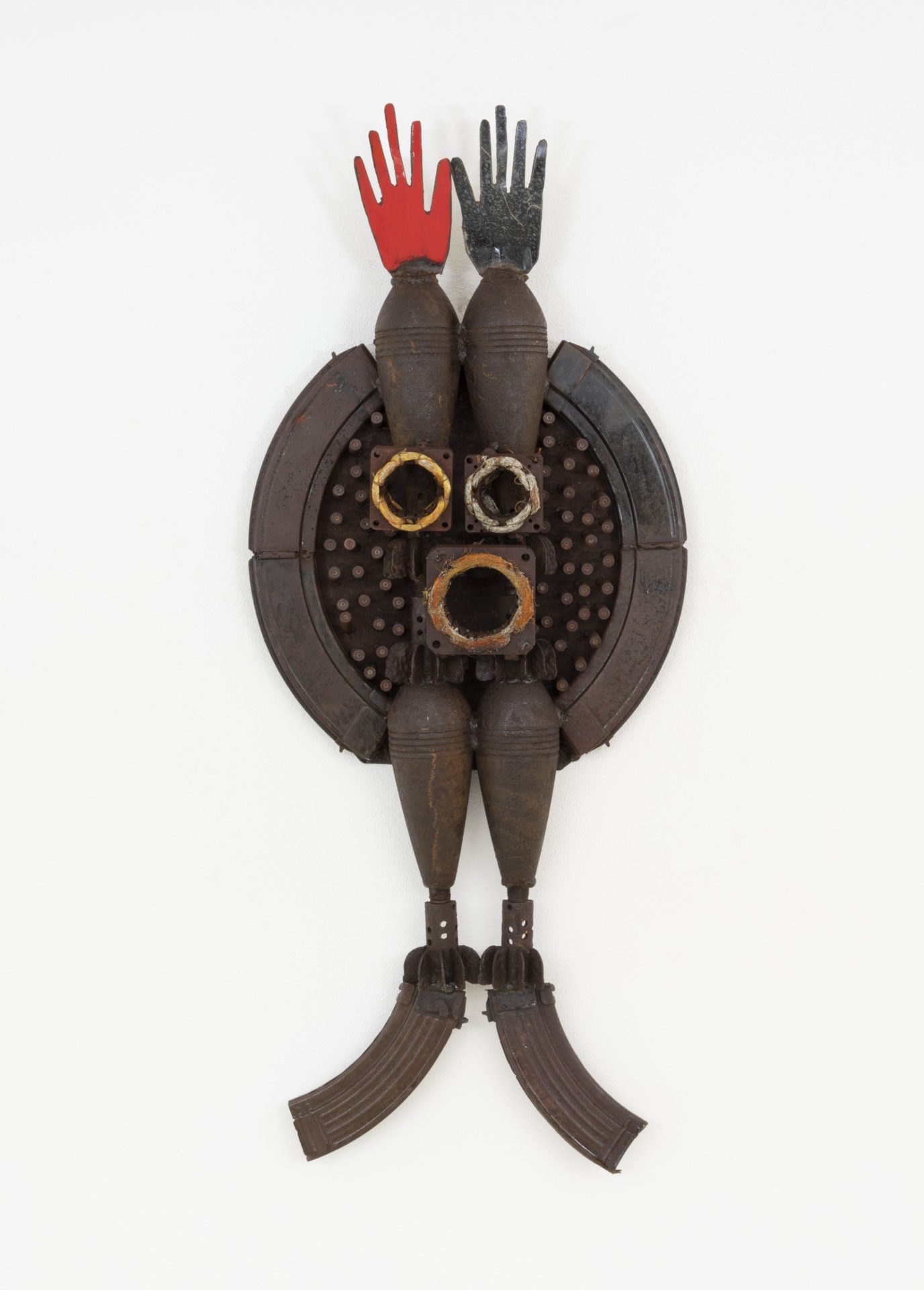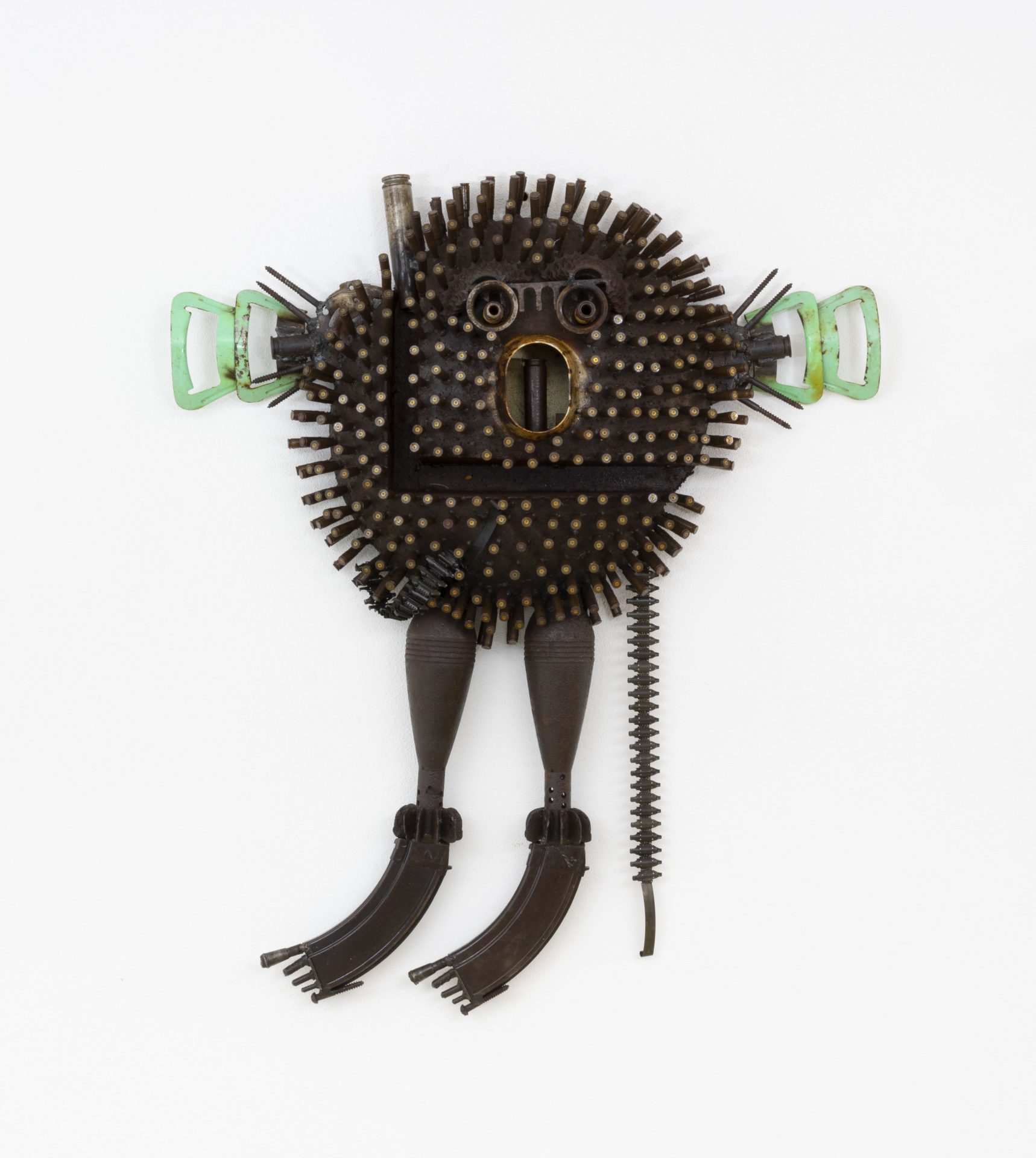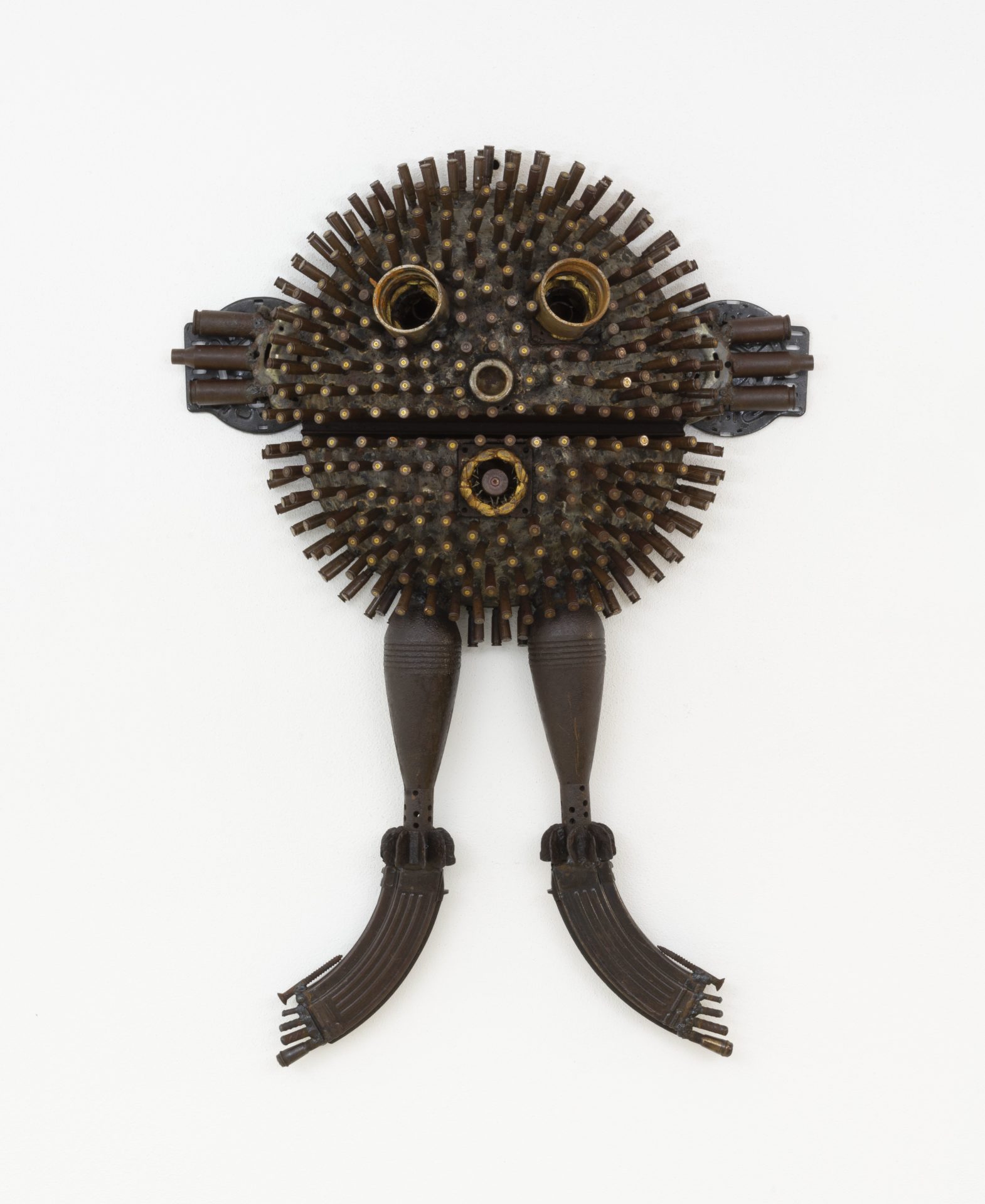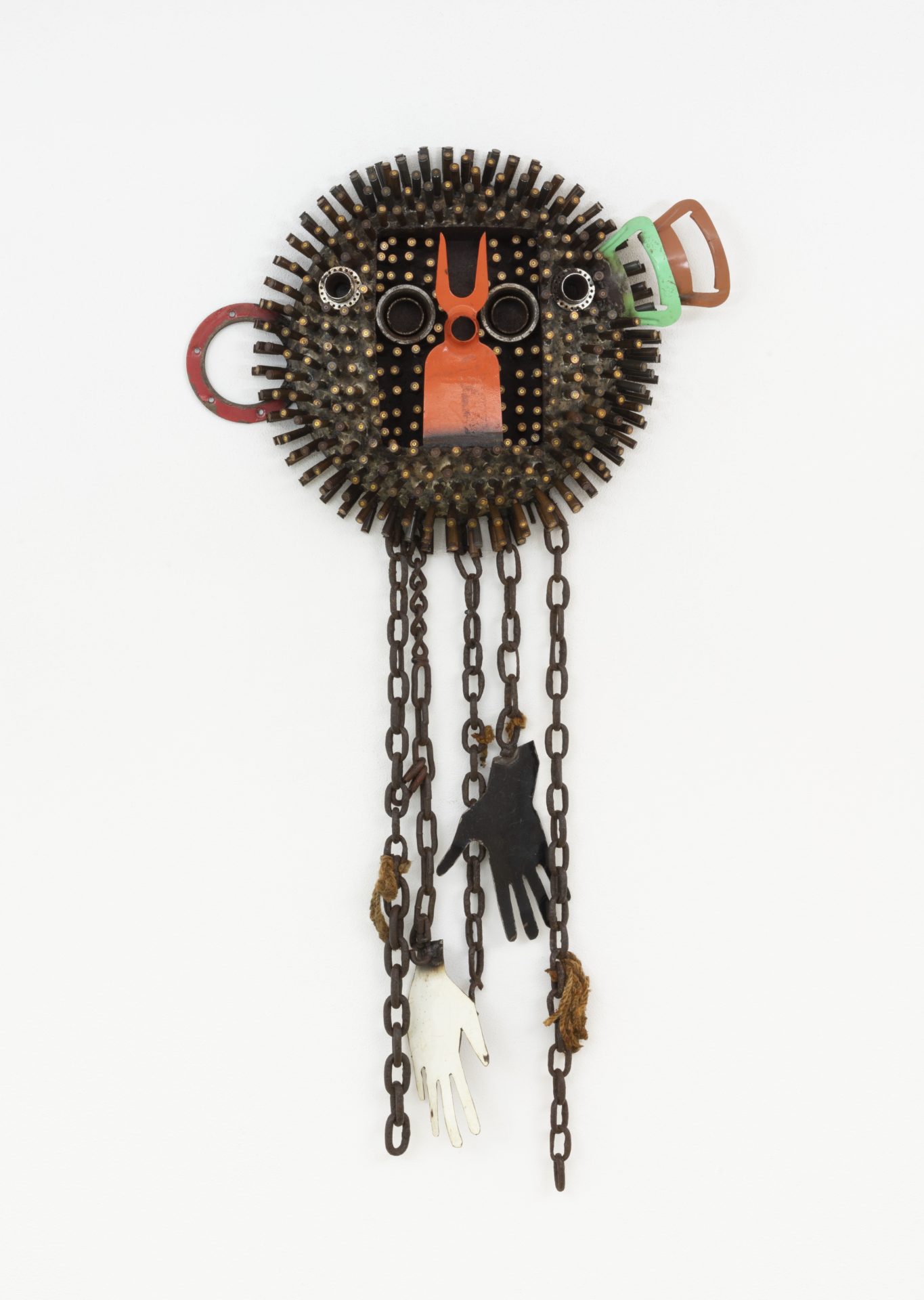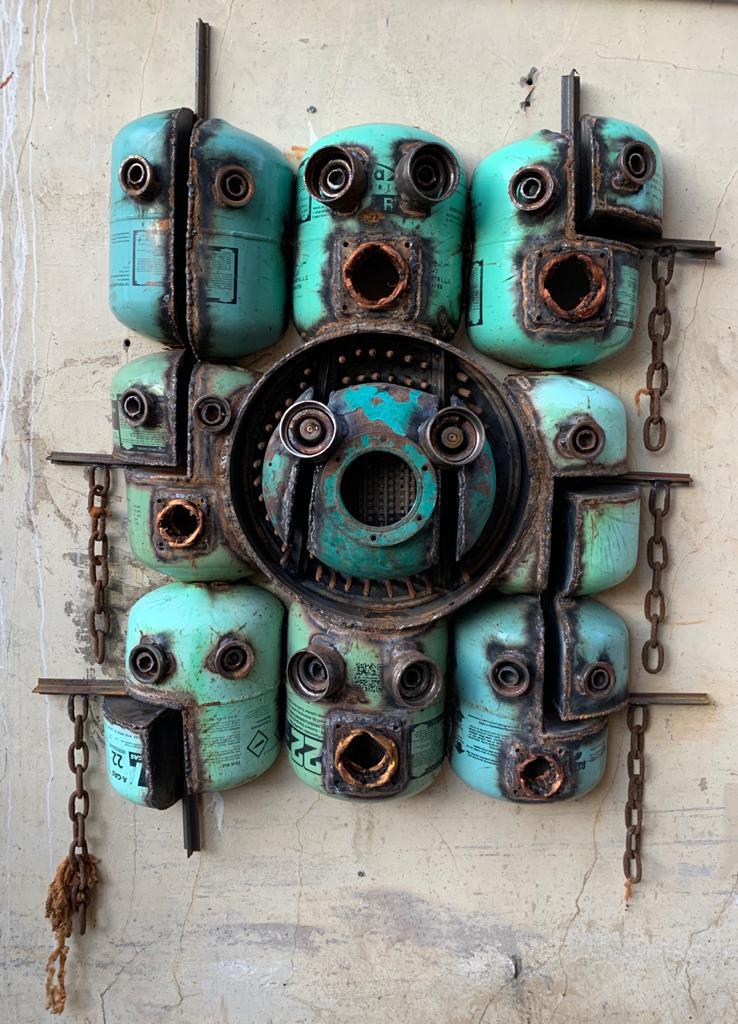Gonçalo Mabunda (Mozambique, 1975) is interested in the collective memory of his country, which has only recently emerged from a long and terrible civil war. He works with arms recovered in 1992 at the end of the sixteen-year conflict that divided the region.
In his sculpture, he gives anthropomorphic forms to AK47s, rocket launchers, pistols and other objects of destruction. While the masks could be said to draw on a local history of traditional African art, Mabunda’s work takes on a striking Modernist edge into imagery by Braque and Picasso. The deactivated weapons of war carry strong political connotations, yet the beautiful objects he creates also convey a positive reflection on the transformative power of art and the resilience and creativity of African civilian societies.
Mabunda is most well-known for his thrones. According to the artist, the thrones function as attributes of power, tribal symbols and traditional pieces of ethnic African art. They are without a doubt an ironic way of commenting on his childhood experience of violence and absurdity and the civil war in Mozambique that isolated his country for a long period.
Mabunda’s work has been exhibited at Museum Kunst Palast, Dusseldorf, Hayward Gallery, London, Pompidou, Paris, Mori Art Museum, Tokyo and the Johannesburg Art Gallery, Johannesburg among others. He was the first Mozambican artist at the Venice Biennale and has shown yearly since 2015.
